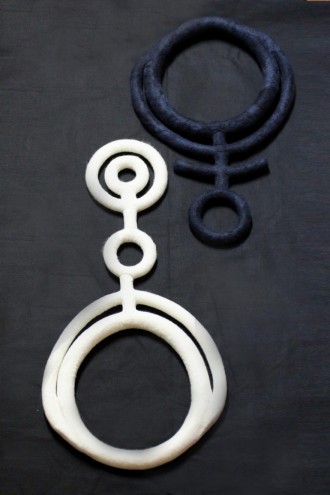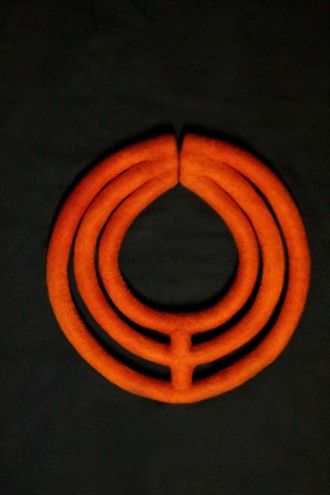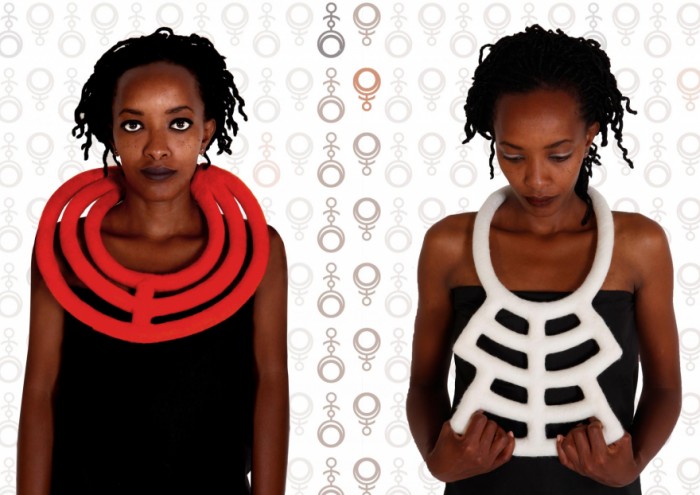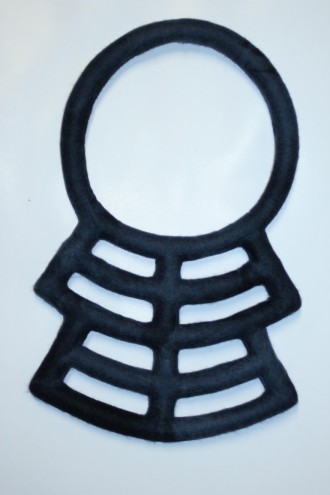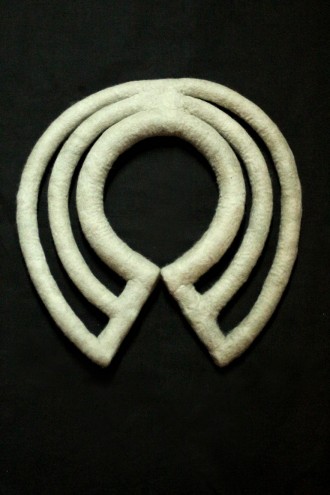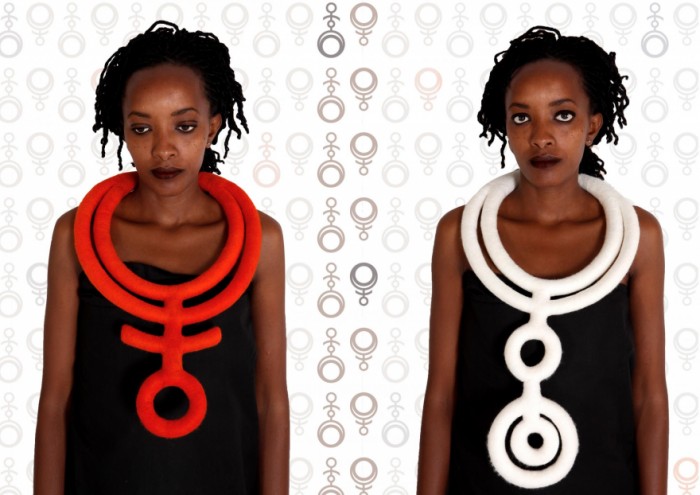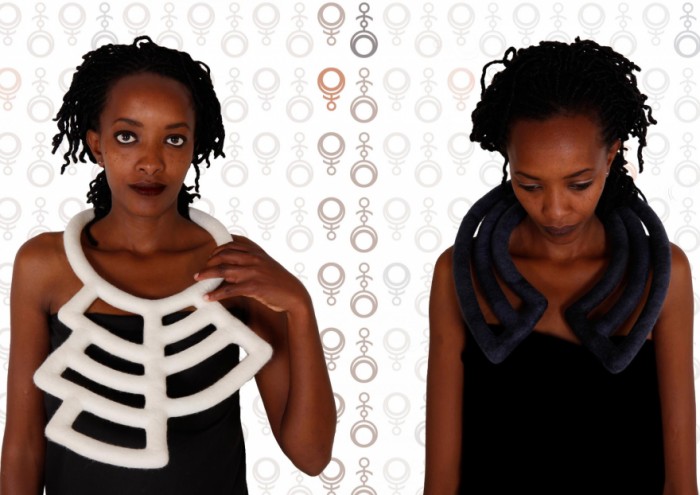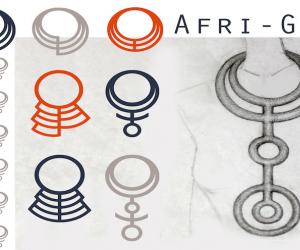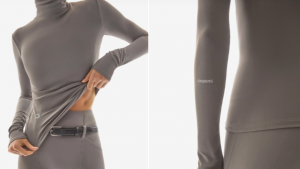Maria Uys, one of Design Indaba Festival's Emerging Creatives 2015, is a surface designer from Cape Town. Uys was attracted to the craft of felt making in her final year of University and she undertook an internship with the University of Cape Town drama department creating felted jewellery pieces for a stage production.
At Design Indaba Expo 2015, Uys will be exhibiting her product range, Afri-Garde, which was created as part of her thesis. It is a collection of hand-felted, African Ndebele-inspired neckpieces that acknowledge their traditional origins while also creating a new aesthetic. The organic felt material contrasts with the modern geometric shapes of the pieces.
For Uys, the beauty of surface design is in its versatility; so although she is exhibiting her jewellery range, there can be no knowing where she might turn her designer’s eye next.
What is a surface designer?
Surface designers are trained in various skills. We learn to apply materials such as paper, wood, plastic, ceramics and textiles in new and innovative ways. Surface design can refer to what the surface is made of and the properties of the material, or what can be applied to the surface, such as screen or digital printing, design elements and textures.
How did you get into making felt jewellery?
I opted to specialise in felt making because of the abundance of possibilities the medium presents. I decided to create a range of jewellery because often creative individuals want to project the artistic aspect of their personality in the way they dress and present themselves to the world. It can almost be seen as a means to carry the artworks one collects around with you rather than being limited to displaying them on a wall or in a gallery.
Do you do the felt making process yourself?
Yes, the Afri-Garde range is completely handmade, from the building of the base structure to the wool felt finish. For this exclusive range, only the wool was bought new. For everything else I used recycled materials.
How do the shapes you use contrast to the materials you use?
Although some of the pieces are asymmetrical and others symmetrical, the shapes that create them are mostly geometric. This is in stark contrast to the organic nature of the felt material. I think that this is what makes the pieces so interesting, because you have this very rigid, linear structure surrounded by a soft, natural, handmade fabric.
Do you think your pieces connect to an African jewellery heritage?
I do believe that the pieces are reminiscent of the bold, colourful and sometimes flamboyant style that ceremonial jewellery in many traditional African cultures have.
How does culture inspire you?
Initially I was inspired by the concept of “alien”. What seems strange or foreign to me might be normal to someone else, and this is often based on cultural biases. This led me to research specifically the Ndebele tribe of Southern Africa, who project their unique style onto practically every surface that creates part of their daily lives - from the geometric, colourful murals they paint on the walls of their houses and ceramics, to the body adornment that initiates wear as they go through various stages of their life. The rings and hoops that married Ndebele women wear around their necks might seem strange and foreign to people from other cultures, but in this same way the wearing of a white wedding dress and veil as westernised women do might seem just as strange or “alien” to them.
Why did you choose orange as a colour to use against the whites and grey? Does the colour have any significance to you?
If I had to sum up Africa in one colour, it would have to be orange (or at least a warm palette of oranges, yellows, reds and browns). Think of the sands of the Kalahari. Think of the sun setting over the Serengeti. Think of our fauna and flora, our fruit exports, our bustling cities at night, gumboot dancers and orange ice-cream lollies on the beach! Think of the vibrant culture, a nation of people who are bright, cheerful and passionate. All of these are things that make up our unique South African heritage. Orange might not be one of the colours in our flag, but it is definitely one of the colours in our hearts.
Tell us a little more about the process of making a single piece? How long does it take, how is it made, etc?
I start by constructing the base out of foam tubing and wire to create the straight lines and geometric shapes. This takes up to an hour, after which the piece is ready to undergo the felting process. This particular form of felt making happens in two stages: the first is pre-felting, in which I apply raw, carded wool to the piece by using a special felting needle. This can take up to four hours and is quite physically draining. After this, the felting process can begin in which the wool is wetted and rubbed with the hands. By doing this, the friction causes the fibres to start sticking together and shrink slightly to form a fabric that cover the base structure. The rubbing takes up to an hour and the piece can then be left to dry overnight before it is ready to wear.
Do you now consider yourself a jewellery designer?
One of the things about being a surface designer is that it is all encompassing. For this particular project I can be considered a jewellery designer, a fibre artist or even someone dabbling in the fashion and accessories field. For my next project I might become a graphic designer, a street artist, a woodworker or a print maker. The possibilities are endless and you are not limited to one principle. Furthermore, I believe that design is subjective, and even better if everyone can make what they want to of the products I create.
Would you like to use wool and felt to create other products?
After working on the Afri-Garde range for a year, I now feel much more comfortable and capable with wool and handmade felt. This natural, sustainable material is versatile and strong, and there are various felt making techniques which can be used for numerous products. I have many new ideas for projects which I will be working on throughout the year.

